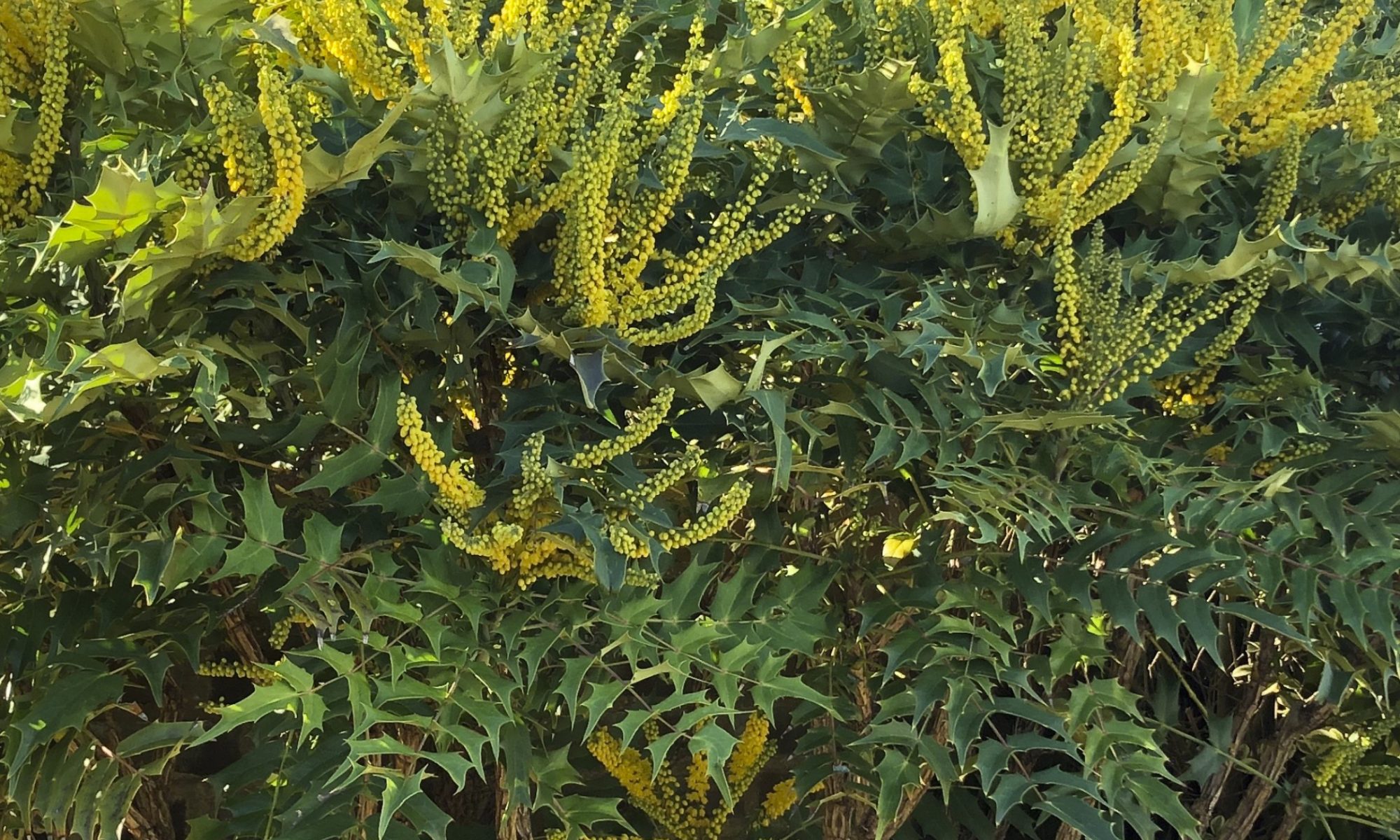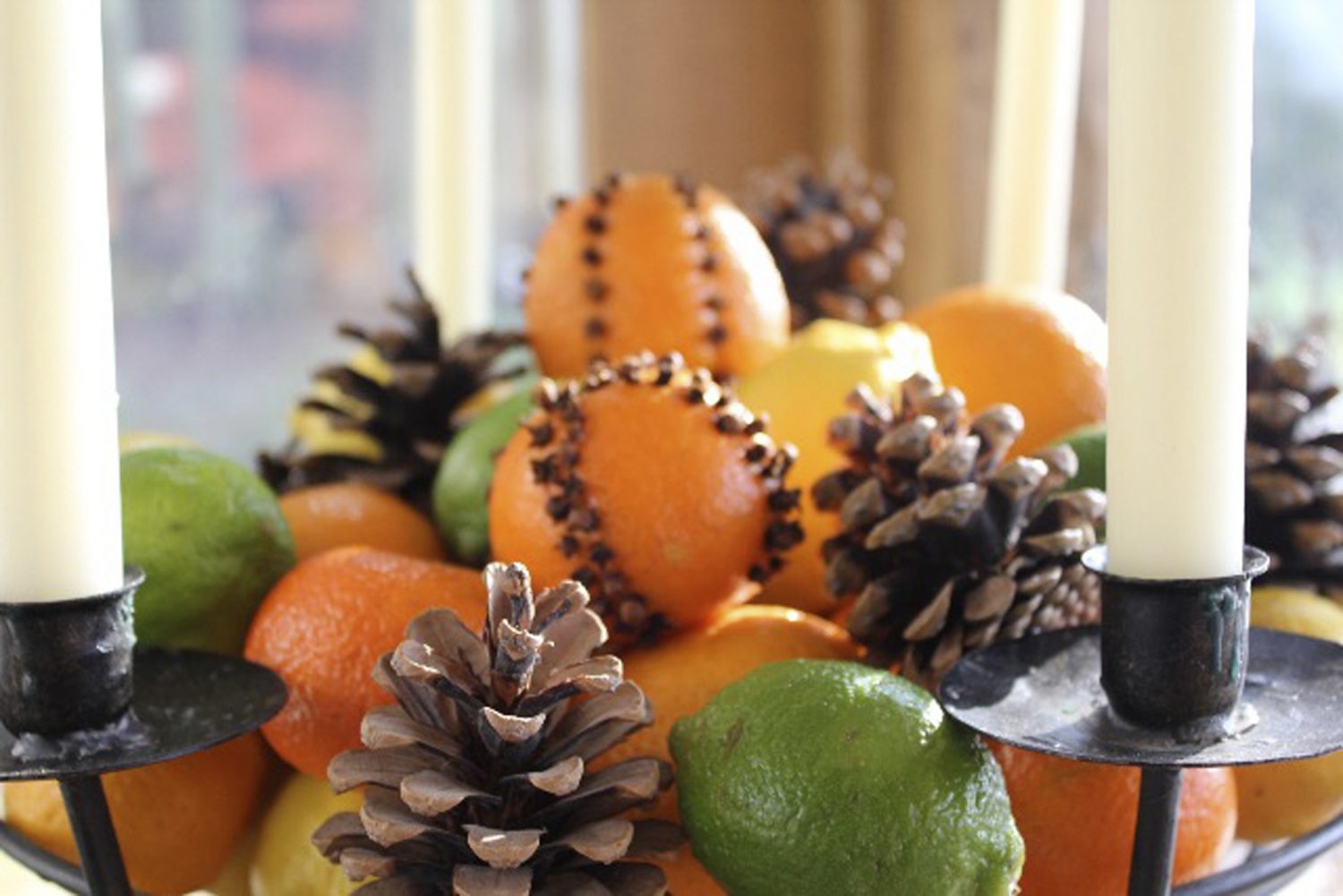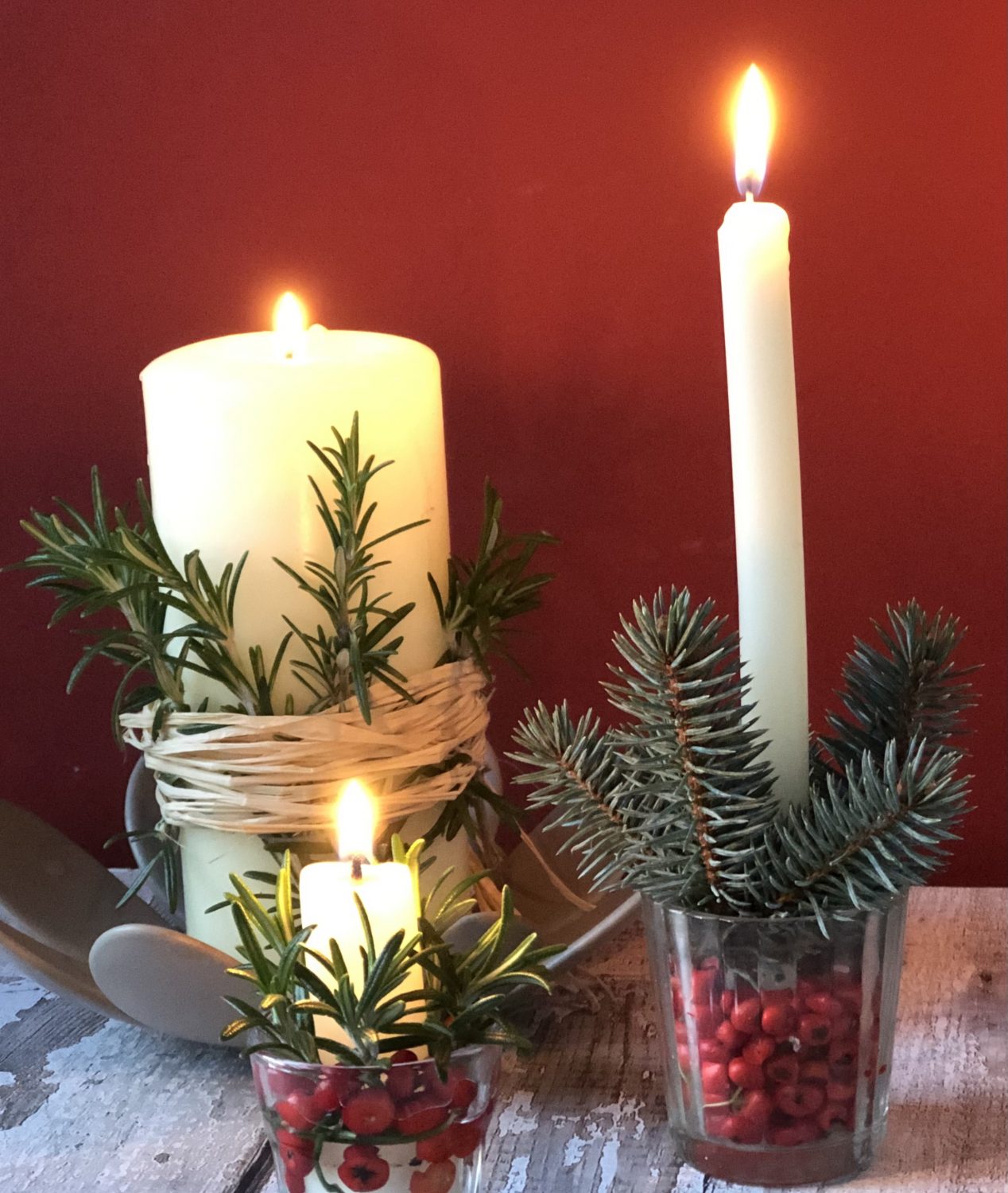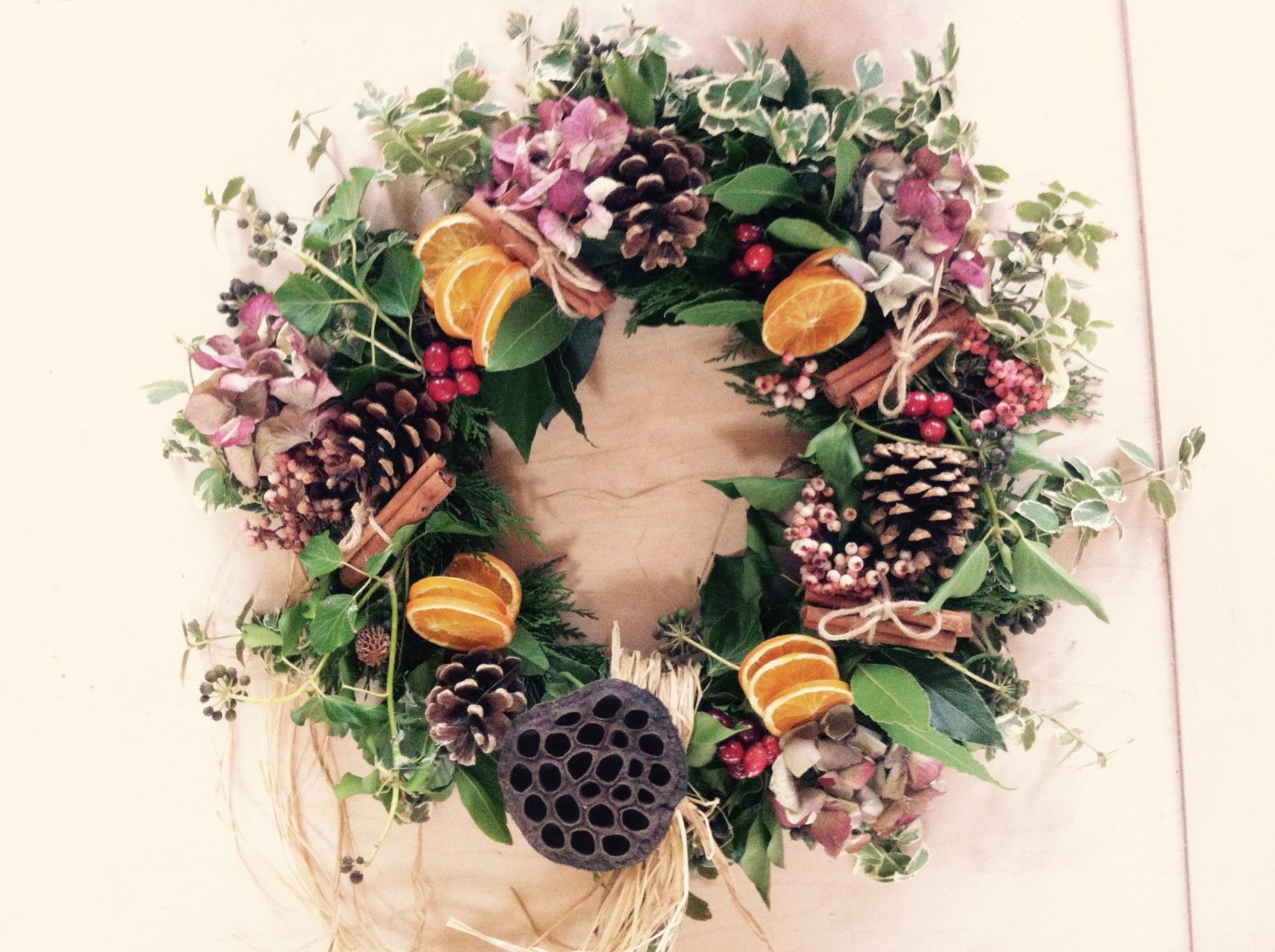Jo Arnell’s recommendations for naturally festive fragrances to raise your Christmas spirits
You’d be forgiven for thinking that Christmas fragrance comes in the form of a mulled wine sachet or a garden centre scented candle as a pervasive blend of cinnamon, cloves, orange and nutmeg takes hold, drowning out all other scents for miles around. Useful if you’ve burnt the turkey, but not subtle by any means. You would also not be frowned at for thinking that the outdoor plants have given up bothering to smell nice until the spring, it is the dormant season after all. Out in nature though, not everything is sleeping and the few creatures that are around need extra help in finding food. Light levels are low to non-existent and such flowers that are braving the cold can’t rely on colourful blossom as they might in warmer months. Instead they lure in the scarce pollinators still lurking about with their scent – and it often has to be quite powerful in order to catch the attention of a sleepy beetle or slow witted winter fly.
It’s heartwarming to think that in our synthetically scented world there are some wonderful winter plants around wafting delicate, natural fragrances into the darkest and coldest of days. I like to imagine that along with the perfume comes a little chink of hope; although we are in the midst of winter and spring is still far away, this is a small sign that it will eventually show up. Christmas lights do a lot to lift our mood in bleak midwinter, but Christmas scents go straight to our hearts, or rather to the deepest parts of our brain, stirring memories and (let’s hope) bringing about feelings of comfort and joy.
Myrtle is an ancient and revered plant, once believed to have magical properties and associated with Aphrodite and Venus, the goddesses of love. It is an attractive, small leaved evergreen that will provide a pretty backdrop for other plants later in the season. Apparently every part of the myrtle is fragrant.
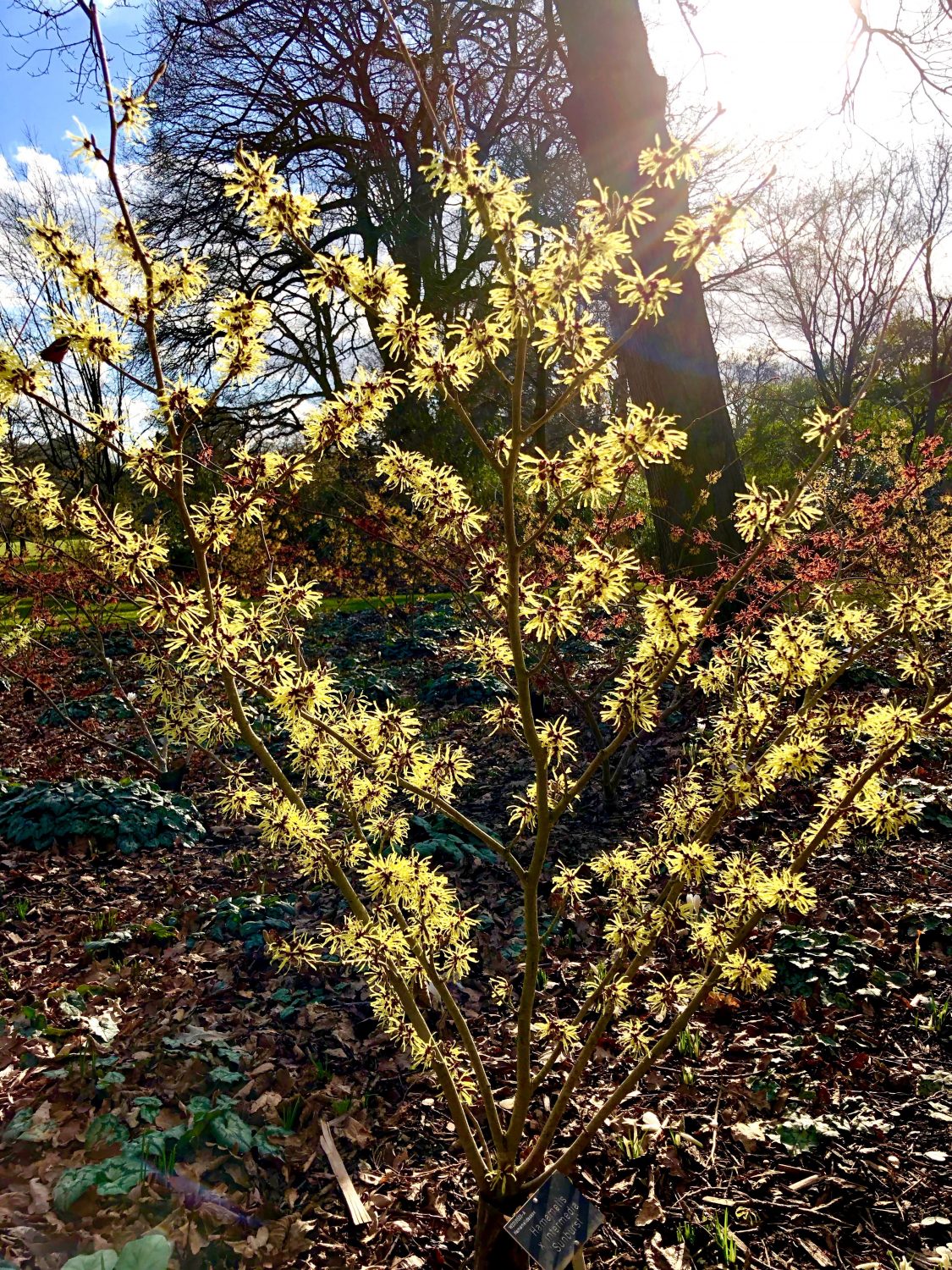
Witch hazel Hamamelis x intermedia ‘Sunburst’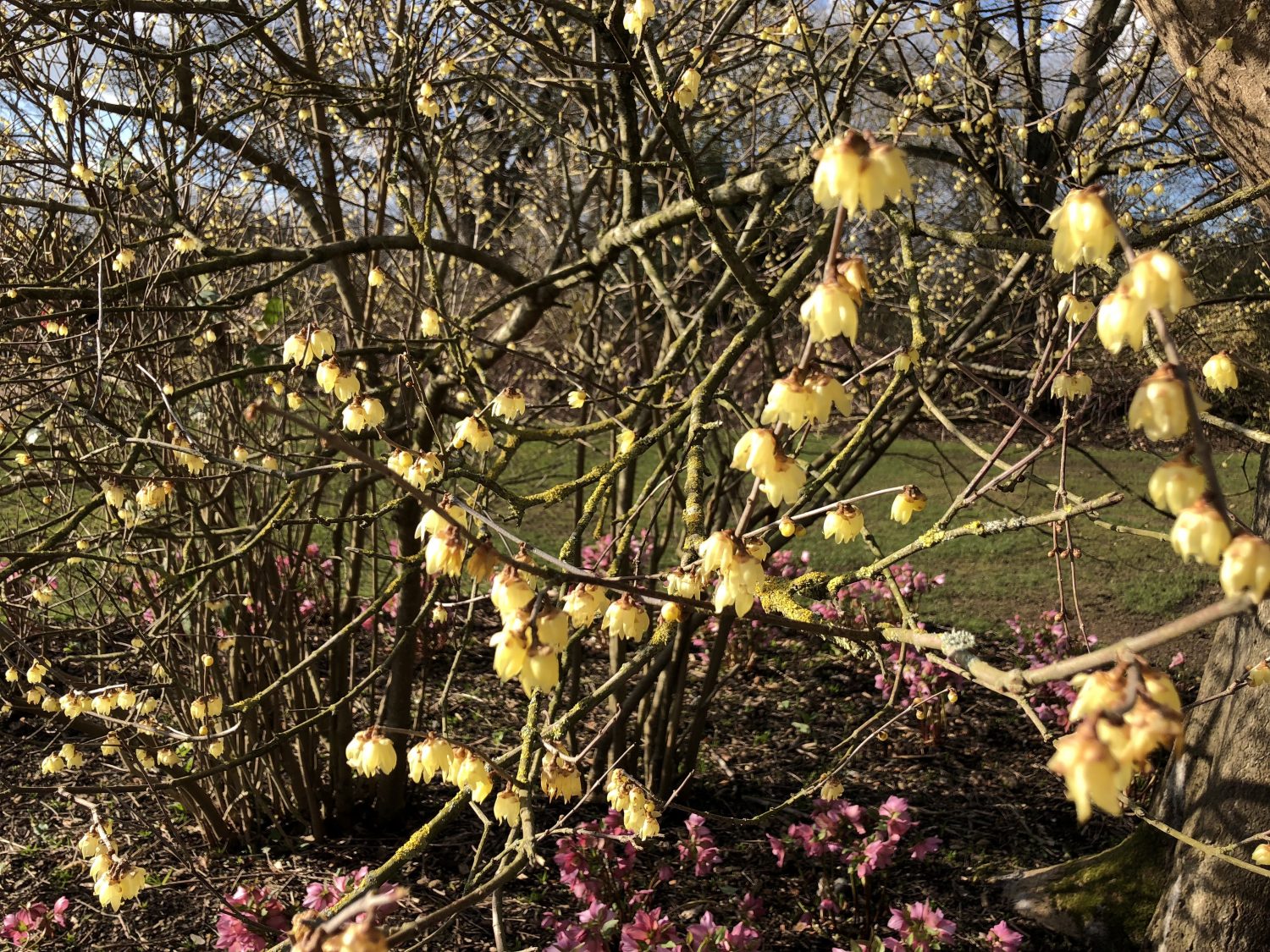
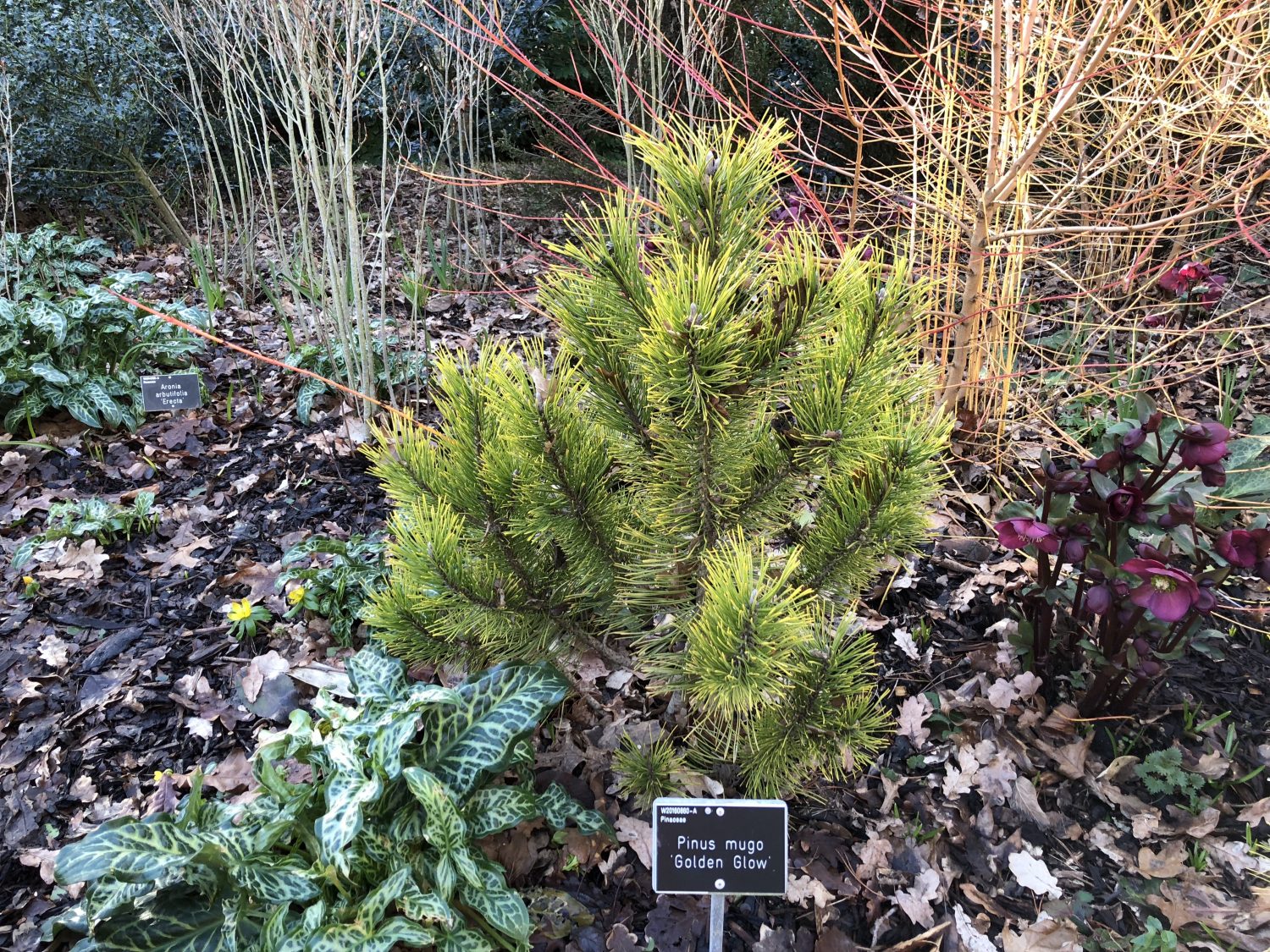
In the garden
Scented shrubs
Sarcococca, or the Christmas box, to use its easier to pronounce name, is a low growing, easily overlooked evergreen, someone insensitive might even call it dull. I’ve taken to calling it the Cyrano de Bergerac shrub, as I once overheard some visitors to Kew Gardens exclaiming over a fabulous scent and then pointing to a showy Camellia, not realising that the source of the powerful perfume was the Sarcococca nearby, its tiny flowers hidden among the leaves.
The spiky sunburst flowers of Mahonia seem incongruous in midwinter; yellow flowers are not traditionally Christmassy like Holly or Ivy, but they are such a cheery sight in the middle of winter, like a burst of sunshine – and they are beautifully scented too, with a perfume like Lily of the Valley.
Winter blossoms are often yellow, cream or white, as paler colours shine out from shady corners, and in the gloom of a winter days. They tend to be smaller too, blossoming on bare stems and relying on their perfume to pack a punch and lure in the pollinators. Many of the early flowers appear on bare stems, long before any leaves start to grow. Winter Sweet (Chimonanthes praecox) is one of these humble bushes, with small cream coloured flowers perfumed with hints of citrus. Lonicera ‘Winter Beauty’ is a winter flowering shrubby honeysuckle that produces masses of sweetly scented flowers in January. It is the scent that is beautiful, not the bush, so make sure that it isn’t centre stage once the flowers have finished. Viburnum x bodnantense ‘Deben’ is better behaved with small pink buds opening to become highly fragrant white flowers. These shrubs are well suited to a path-side position, but they’re best grown in a sheltered place, or somewhere that traps the fragrance.
Fragrant foliage
You might need to brush past a plant with aromatic leaves in order to enjoy their scent, or even cut some to bring inside and add to winter arrangements. The fragrance is usually held within the concentrated sap in the stems and leaves, rather than flowers. We are all familiar with rosemary and lavender, but many pines, firs and spruces have distinctive aromas. Much maligned, conifers can have lovely fragrances when their leaves are bruised or crushed. Some have the typical conifer type foliage, but Cupressus macrocarpa (the lime green one sold as bedding), releases a fresh citrus fragrance.
Indoors
Forcing bulbs
It is possible to make spring come at Christmas – inside at least, if you plant scented bulbs like Paperwhite narcissi and prepared Hyacinths in the autumn. It’s more like trickery than forcing, as the bulbs are fooled into thinking winter has arrived in the summer, so that when we bring them inside and plant them into compost (or dangle them in jars) they imagine it’s spring and burst into growth. Make sure that you buy specially prepared bulbs, that have been primed to grow early. Paperwhites are quicker to grow – they will flower within 6 weeks of planting, while hyacinths take a little longer – pot these into a container with some bulb fibre and place in a cool dark place for 6-8 weeks, then bring into the light and warmth of fake spring once the shoot has emerged. Planted into decorative antique/retro bowls these make lovely Christmas gifts too. The bulbs can then be planted outside in the new year and should flower again the following spring.
Wreathed in fragrance
Homemade decorations, wreaths and table centrepieces are great fun to make and are a natural antidote to all the plastic that we get swamped with at Christmas. Use sprigs of rosemary, bay and other fragrant foliage to make them more enticing and the warmth of the room may help the leaves release their aromas. The great thing about making natural decorations is that they’re easily recycled afterwards – put them into your brown bin or straight onto the compost heap.
Making scents
For long lasting Christmassy fragrance indoors you could make your own festive potpourri using a mix of cinnamon sticks, pine cones and spices in a shallow bowl (not to be confused with the nibbles). Studding a few clementines with cloves instantly creates a citrus and spice aroma and will keep smelling nice for weeks. Hang from the tree, arrange in a decorative pile around a candle or add into the potpourri.
“Homemade decorations, wreaths and table centrepieces are great fun to make and are a natural antidote to all the plastic that we get swamped with at Christmas”
To find out more about Jo’s upcoming gardening courses, visit hornbrookmanor.co.uk
or call 01233 861149 for details.
You may also like
Go with the Flow
Sue Whigham shares some valuable new-to-gardening advice I’m sure that by now we should be used to the rain but I’m not entirely sure that we are. We had a dry, sunny day the other day and how everybody’s mood...
Farm Fables
Jane Howard gets to the bottom of why so many ponds have disappeared across the High Weald I have a new passion, almost an obsession, it’s about ponds. And there’s a distinct possibility I might become a bit of a...
Hedge Issues
Sue Whigham takes a meander along nature’s verdant and vital corridors Recently the BBC’s Today programme carried a feature about England’s hedgerows which created a lot of interest among listeners. On the strength of that, Martha Kearney interviewed one of...
